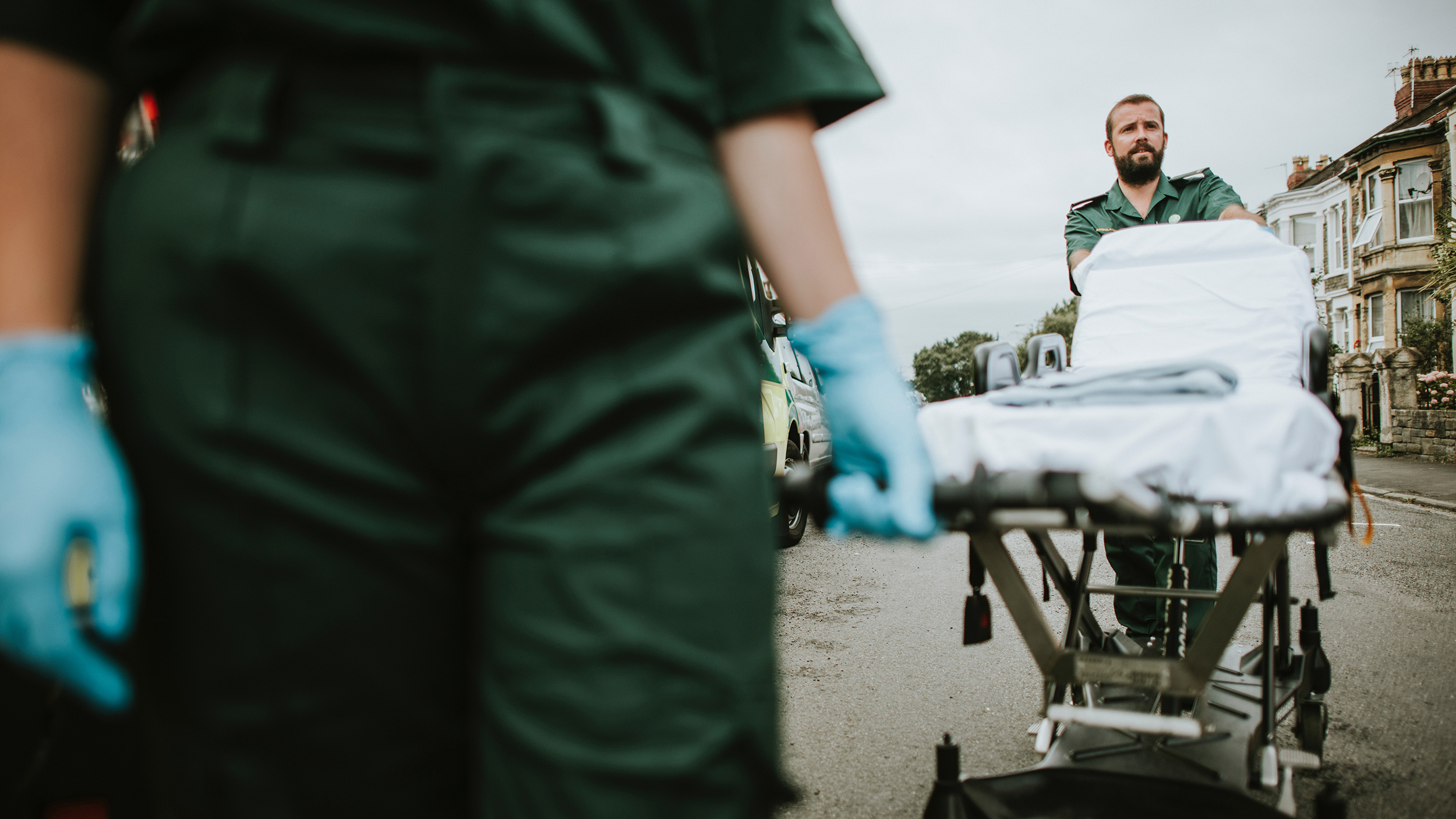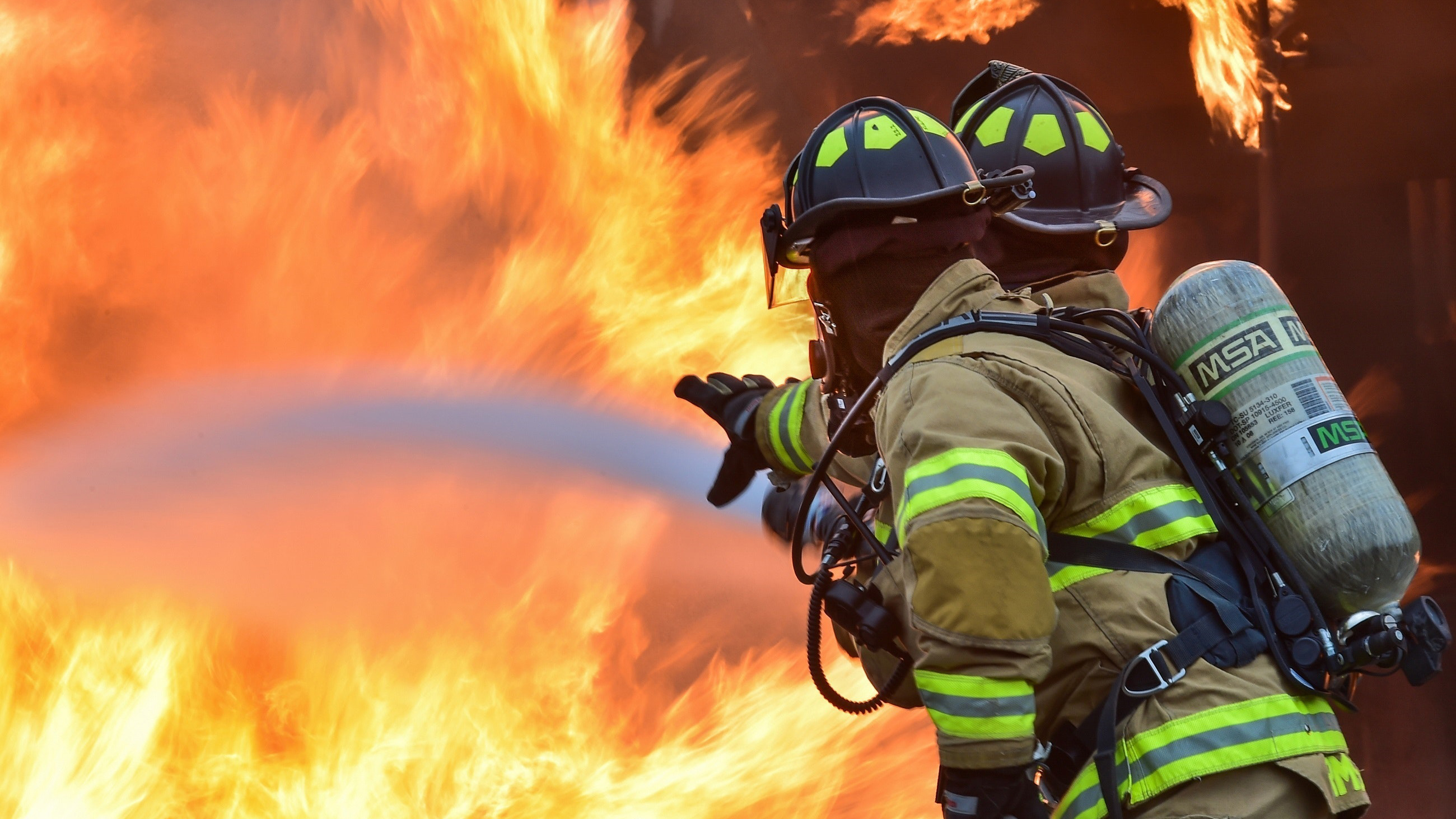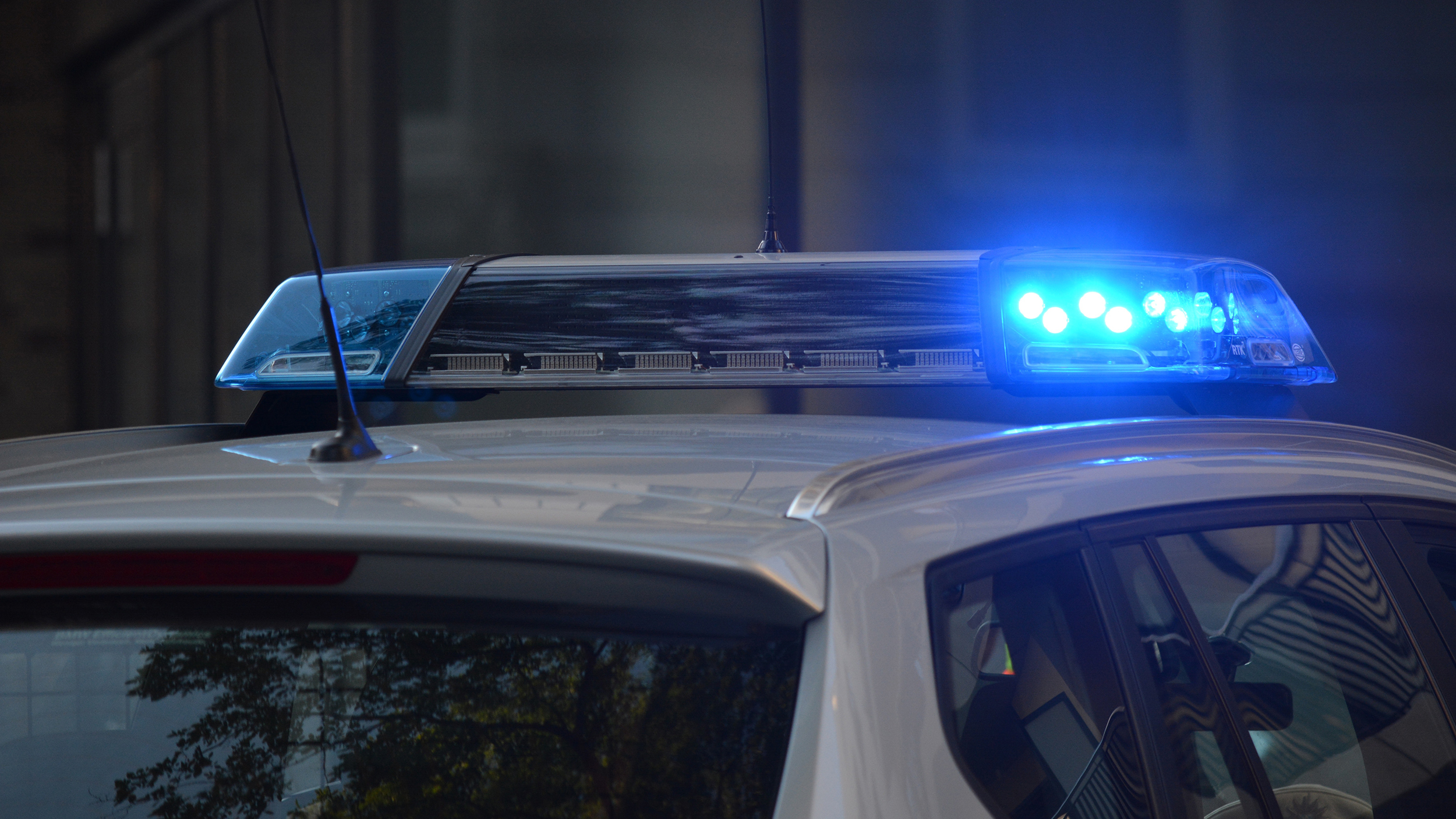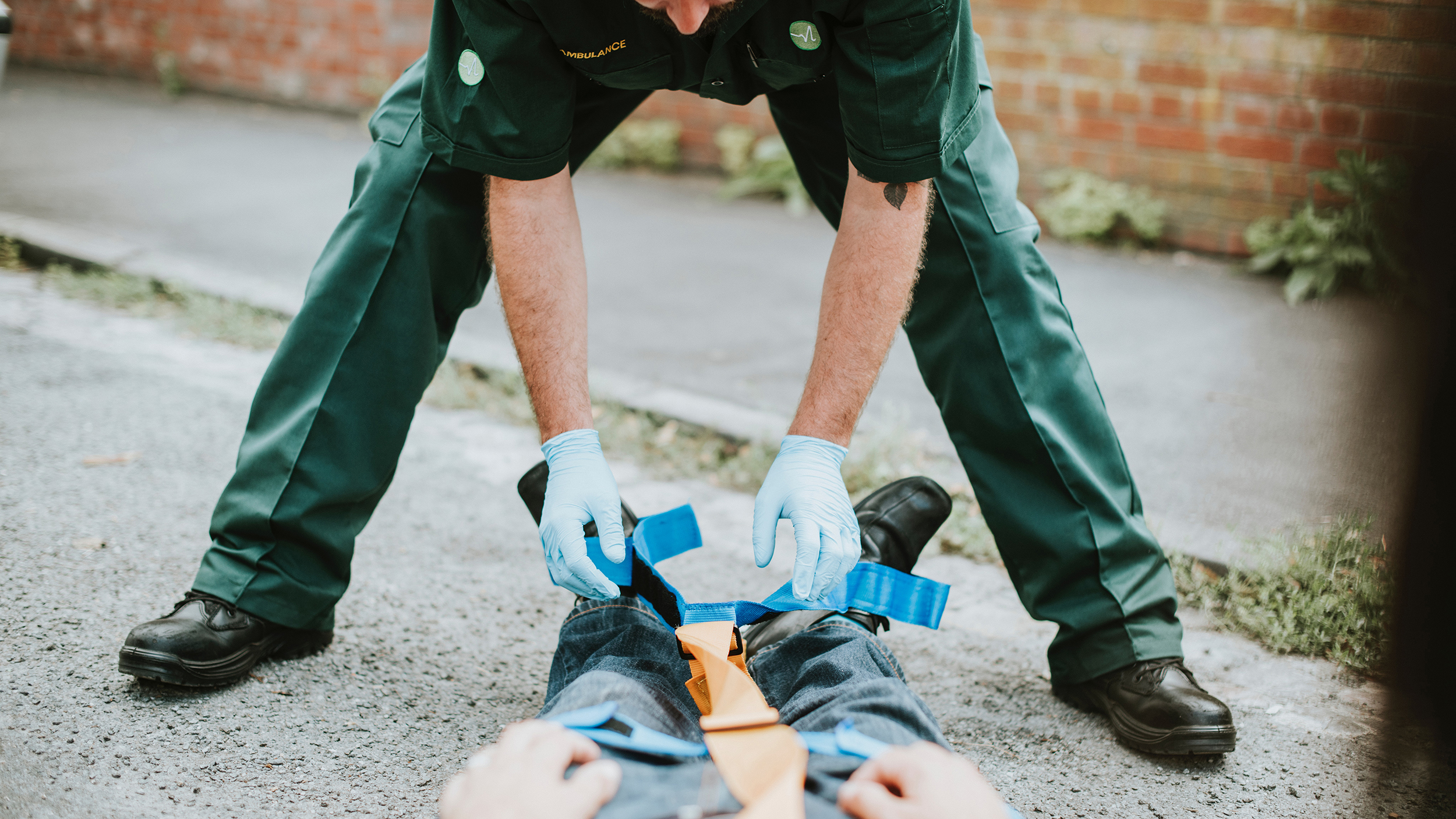How emergency services and disaster recovery will benefit from 5G
Emergency vehicles will become digital hubs for connected first-responders

It isn’t just bored commuters and the lone, weeping engineer in charge of the UK rail network’s onboard WiFi who will benefit from the rollout of 5G, the next-generation mobile network.
With more data, sent more quickly and for less money, police, paramedics and firefighters will use the same framework to assess emergency situations more quickly and communicate developments back to control rooms in real-time.
Instant emergency livestreams
If pressed, how would you describe a head wound?
Tricky, isn’t it? Without reaching for the online thesaurus or medieval literature. It's the same story if you're describing in fine detail the person you only glimpsed across the road in the half-second it took them to snatch a stranger’s tote bag; or exactly which part of your house is on fire, how much fire there is and who amongst your dinner guests has proven the most flammable.
Currently, that’s more or less the constraint under which the emergency services operate. Whether it’s the ambulance service, the fire brigade or the police, communication at the scene of an emergency is almost always relayed verbally.
Before additional support arrives or the ambulance brings a patient back to the hospital, preparations are made based on the radioed descriptions from the first responders. Where video footage is collected from the scene – through bodycams or dashcams – it is (for the most part) stored with the devices, physically carried back and manually uploaded for later reference.
5G provides the technological scaffolding to change that: data streaming to personnel on the ground and back to controllers, who can then make life-and-death decisions in real-time. You don’t have to describe how far the fire is from the flat next door: the people with the authority to send more fire engines can see that for themselves.
Sign up for breaking news, reviews, opinion, top tech deals, and more.

Connected ambulances
“The current communications for the emergency services do work well,” says Sophie Weston, Programme Manager and Lead on 5G for the Communications Infrastructure at TechUK.
“But really, the emergency services should always be looking to harness the benefits of technological developments. One application in particular that requires faster, low-latency connectivity at the moment is real-time video: whether that’s from a police officer’s body-cam, or thermal images from a drone used by the fire brigade.
"From their point of view, they want to be able to see what’s happening right then, in sufficient clarity that command decisions can be taken.”
Supporting this new, super-connected interplay between responders and controllers will be refitted, 5G-enabled emergency vehicles. Today a police van, a fire engine or an ambulance is first and foremost a means of transportation for response teams to the site of an emergency and – particularly in the case of ambulances – a means of moving people away from danger to a place of safety and treatment.
With 5G, these vehicles will become rolling network centers; the central link in the chain that simultaneously allows personnel to communicate with each other on the ground, but also to send data they capture back to those in charge, who can then decide both whether to send more support to an emergency or prepare themselves for what the vehicles’ drivers are bringing back.
In particular, this will affect refitted, ‘connected’ ambulances.
With a fast, low-latency network, an ambulance can essentially be used as a connection hub for medical equipment and wearables that allows "real-time streaming of patients’ data to the emergency department in the hospital it’s going to,” says Weston.
“For example, the initial plans for connected ambulances include video conferencing with consultants or other clinical specialists. Or the network could help live-stream patients’ data from the ambulance en route to the hospital to help the hospital staff prepare for the patient’s [arrival]."
“So, instead of getting to the hospital and getting the [patient’s] information there and then, with the 5G network you’re able to send that data to the hospital while the ambulance is still half an hour away.”

A slow rollout
As with the hyped-up messages you’ve seen from your network about limitless streaming, however, all of this promise comes with small print.
The rollout of 5G in the UK is going to be a staggered process, driven in large part by big clusters of people who want uninterrupted Prime Video rather than (one hopes) immediate and real-time streaming for paramedics. That means as with 4G, access will spread outwards from cities and full coverage will take time.
It also means that – while the promise of 5G-enabled, real-time video communication sounds brilliantly simple – the technology only works as well as the people and devices who use it.
In the same way that most of us will only see the benefits of 5G when we upgrade to a 5G-capable smartphone or tablet, the emergency services too will have to upgrade their current vehicles and wearable tech.
Whatever the long-term savings (lives first and foremost, but also and less tastefully, costs) in the short-term, that requires money both for the devices themselves and for training in how to use them – whether that’s a new communications protocol adapted for live-streaming video, or police or firefighters on the ground monitoring an area in real-time through a video link from one or more drones.

“Considerable investment will have to be made by the emergency services in all places,” Weston says.
“That includes the control rooms, the [vehicles], portable devices such as body-cams, drones… and then also in the training of the staff to use the new equipment safely and for the maximum benefit. You can have all these new vehicles, but in terms of what’s behind that, it’s obviously going to take considerable investment and training which will take some time.”
5G is, at the moment, a consumer thing marketed to the early-adopters who will, in return for a hefty contract or early-upgrade fee, be able to watch YouTube videos, scroll through Facebook and message a thousand friends about it using whichever messaging service they choose.
It will take longer for it to happen, but on the coattails of consumerist hype our police, fire and ambulance services should get a connected suite of tools that let them work better and more safely.
5G Uncovered, in association with Samsung, brings you everything you need to know about the next wave of connectivity - not just how fast it's going to be, but in just how many ways it's going to change your life. Our 5G Uncovered hub is carefully curated to show everything there is to know about the next generation of connection.
- What is the Internet of Things? Everything you need to know